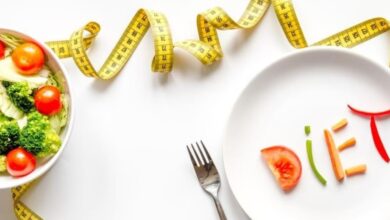Breastfeeding is a mockery of the constitutional right of the world’s infant milk market | 1 News Track English

[ad_1]
Stanpan: Perhaps very few of us know that breastfeeding is a constitutional right. Maybe not even sure. But if a High Court says this, there is no room for disbelief. The Karnataka High Court, in a dispute between a genetic mother and a foster mother, held that “breastfeeding is a constitutional right.
The Karnataka High Court said that Article 21 of the Constitution gives this right to the mother. It cannot be taken away. Similarly, the newborn has every right to get his mother’s milk. These two are interlinked concurrent rights.” It is provided for in the constitution as well as in international law.
Right of mother to breastfeed her child (stanpan karna maulik adhikar)
According to Article 25(2) of the 1989 International Convention on the Rights of the Child, recorded in the Global Declaration of Human Rights, the newborn has been given the right to breast milk. The mother has also got the right to breastfeed her child.
The court was hearing a plea by a mother whose newborn was stolen from the hospital soon after birth. The woman had appealed to get her child back from her foster mother.
In such a situation, a new debate is bound to arise regarding breastfeeding (stanpan karna kyon jaruri hai). Breastfeeding should be started within an hour of birth. This increases the quantity of milk. The baby should be breastfed as many times as he wants. Breastfeeding helps the mother’s uterus to contract. Reduces the risk of excessive bleeding or infection.
Breastfeeding (Photo – Social Media)
Colostrum, the thick-yellow milk that comes out of the mother’s breast during the first few days of childbirth, is best for a newborn. It is highly nutritious. Protects the baby from infections. Sometimes mothers are advised not to give colostrum to their babies. But this advice is wrong.
Because the Ministry of Health and the World Health Organization recommend exclusive breastfeeding to the baby for the first six months after birth. The World Health Organization and the Ministry of Health recommend continuing breastfeeding until a child is two years old.
Its many benefits for the mother too (stanpan karane ke interactions)
The nutrients present in breast milk will continue to benefit her. Breastmilk is best for the baby. Breastmilk provides the baby with everything it needs for its growth. Also, it has many benefits for the mother as well.
According to a research, if all babies were given only breast milk in their first six months, an estimated 1.5 million lives would have been saved every year. Health and development is also very good. Animal milk, newborn formula, powdered milk, tea, sweetened drinks, water and foods taken in breakfast are less nutritious than breast milk.
Mother’s milk is easily digested by the baby. It provides optimum growth and development and immunity against diseases. Even in hot and dry weather, mother’s milk fulfills the fluid requirement of the newborn. Water and other beverages are not necessary during the first six months. Giving a baby any other food or beverage than breast milk increases the risk of cholera and other diseases.
Breastfeeding helps babies and young children fight off serious diseases. It also creates a special bond between mother and child. Mother’s milk is the baby’s first vaccination. It provides immunity against cholera, ear and chest infections and other health problems. When the baby is given only breast milk in the initial months. If breastfeeding continues for the second year or more, this immunity is amazing.
Breastfed babies usually get more attention than babies who are bottle-fed. Care helps with the growth and development of the newborn and making him feel more secure.
Bottle Feeding Babies (Photo – Social Media)
Breastfeeding gives a woman 98% protection against becoming pregnant for at least six months. But this is only if the period has not resumed, if the baby is breastfed in the morning and evening, if the baby has not been given any other food and drink or alternative drink.
As long as the baby continues to breastfeed, it will take the same amount of time for the mother’s menstrual cycle to start again. If the mother breastfeeds less than eight times in 24 hours or provides other food or drink or pacifier or alternative drink, the baby will receive less amount of milk which may cause early onset of the mother’s period. It is possible that she may become pregnant again before her cycle returns. Its risk increases after six months of birth.
Baby milk formula much better than breastmilk (baby milk formula)
Many companies in the world are engaged in selling and promoting baby milk just for their profit. According to a report by the ‘Save the Children’ organization, such campaigns are run by companies in the poor countries of the world, which claim that baby milk formula is much better than breastfeeding.
Such campaigns are run by targeting mothers. The Save the Children report named four companies – Nestle, Abbott, Mead Johnson and Wyeth. It has been told that these companies run propaganda campaigns secretly and illegally.
The report cites the example of the Philippines, where only 34 percent of mothers breastfeed their babies. Companies have also promoted baby milk formula on the pretext of Corona. The organization ‘International Baby Food Action Network’ has said that companies are capitalizing on fears that the corona virus can be transmitted to the baby through breast milk. The example of Nestle has been given in this regard, which is distributing baby food in the name of Corona relief in India and Pakistan. While there are laws against such donations and there are global rules and regulations.
Despite the ban on direct marketing, many big companies are running digital advertisements around the world, in which the corona virus and breastfeeding are being presented. The global market is worth $50.46 billion, which will grow to $109.20 billion by 2027. That is, a growth of 10.6 percent annually. The baby food market in the US alone is $5.59 billion annually.
Baby food majors in India are Nestle, Amul, Nutricia, Abbott, Manna Foods, Pristine Organics, Mead Johnson and Raptakos Brett. The baby food market in India is worth Rs 4500 crore annually. This market is growing at the rate of 16 per cent per annum.
(Photo – Social Media)
25 million babies born every year in India
Asia Pacific alone accounts for 56.26 percent of the world’s market for baby milk. The reason for this is illiteracy and poverty. In India, 58% of mothers breastfeed their babies for five months. The world average is 43 percent. According to UNICEF, 25 million babies are born in India every year.
The sale of baby milk powder is banned in European countries. In many countries of Europe, it is promoted by the government that you should not feed your child with baby powder. Baby milk powder is called “baby killer” in Europe.
Baby milk powder was earlier widely sold in the Indian market. For many years, the baby powder that was sold in the country did not have anything written on it. After pressure, the government made such amendments that companies would be required to write on the box of baby powder that mother’s milk is best for the child.
There are a variety of baby food formulas available for babies in India. This is also under a strategy of companies to sell their product in some way or the other. Ready-to-use Formula, Liquid Concentrate Formula, Powder Formula, Cow’s Milk Formula, Hydrolyzed Formula, Soy Based Formula, Lactose Free Formula, Special Formula for Premature Babies, Fortifier Formula, Metabolism Focused Formula, Organic Formula, Special formula is sold in the market.
India is the largest milk producing country (Milk Production in India)
India is the largest milk producing country in the world. According to the National Dairy Development Board, 55.6 million tonnes of milk was produced in 1991-92. The per capita availability was 178 grams per day, while the production was 84.4 million tonnes in 2000-01. Availability increased to 222 grams per day.
Milk production was 187.7 million tonnes in 2018-19. The per capita availability of milk was 394 grams per day. In 2019-20, 198 tonnes of milk was produced. Per capita availability per day increased to 406 grams.
photo social media
The impact of the Corona period has also been on the dairy sector, due to which there was a significant decline in production in the financial year 2020-21. For 2020-21 this figure was fixed at 208 million tonnes. Milk production in India has grown at an average annual rate of 6.3 percent during the last six years. The availability of milk was 307 grams per person in the year 2013-14.
The value of milk production is more than Rs 7.72 lakh crore at current prices during 2018-19. This is more than the total production value of wheat and paddy. Milk production has grown at an average rate of 6.3 per cent per annum during the last six years, while the world milk production has been growing at the rate of 1.5 per cent per annum.
The dairy sector is the single largest agricultural commodity with a share of 4 per cent in the economy. India is the largest producer of milk globally with a production of around 188 million metric tonnes in 2019-20.
Indian milk production is expected to grow to 270 million metric tonnes by 2025. Milk production in India has grown at an average rate of 6.3 per cent per annum during the last six years, while the world milk production has been growing at the rate of 1.5 per cent per annum.
More than seven crore people of the country connected with the business of milk
photo social media
The export of dairy products in India was 54,762.31 MT during the year 2020-21. During this, a business of Rs 1,491.66 crore i.e. $ 201.37 million was done. The countries to which dairy products were mainly exported in 2020-21 were UAE, Bangladesh and other Southeast Asian countries.
Uttar Pradesh has set a record in the dairy sector by contributing the most in India’s milk production. In the last four years, Uttar Pradesh produced 1,242.37 lakh metric tonnes of milk. Milk production in UP increased from 277.697 lakh metric tonnes in 2016-17 to 318.630 lakh metric tonnes in 2019-20.
There have been many cases of adulteration in loose milk and its related products. Actually, basic standards of hygiene are not followed in milk production in India. At the same time, 68.5 percent of the contaminated milk supply is due to germs and bacteria.
More than 80 percent of liquid milk is consumed in India. But not much attention is paid to its processing. Such a supply chain is also not very sound. A large proportion of the milk produced does not adhere to basic standards of hygiene.
70 percent of the milk supply in the country comes from small, marginal or landless farmers. For the last 15 years, India has been at the forefront of milk production. Uttar Pradesh, Gujarat and Punjab, these three states are at the forefront of milk production. More than seven crore people of the country are associated with the milk business.
India produces milk at the lowest cost in the world i.e. 27 cents or twenty rupees per liter. In the US it costs 63 cents. India will become the leading producer of milk products in the world with triple growth in the next 10 years.
There are now more than 400 dairy plants in the country. Consumption of milk from a cow or buffalo produces 3.2 kg of carbon. To produce one liter of dairy milk, 628 liters of water is required.
Tough decision to close the market of infant milk
In the year 2018, Mohan Singh Ahluwalia, a member of the Animal Welfare Board of India, had described about 68 percent of milk and its products sold in the country as fake. Said that these products do not meet the norms of Food Safety and Standards Authority of India (FSSAI). While confirming the adulteration in milk and its products, Ahluwalia had said that the most common adulteration is in the form of detergent, caustic soda, glucose, white paint and refined oil.
The big question is when does the mother have the best milk in the world for babies. According to the law, this is also a constitutional right and the disadvantages of baby food are also well known, so why are companies being allowed to trade baby milk to make profits.
Even in the Corona era, companies are playing with the health of babies and are engaged in dealing with the sympathy of the parents. Perhaps it is time for a tough decision to close the infant milk market along with the constitutional right to breastfeed.
.
[ad_2]






